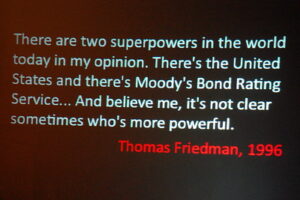A recent survey by UpSwell Marketing reveals that 80 percent of consumers are open to going back to their health clubs. 80% sounds like a lot, but reality bites, right? Only one in four consumers used a fitness facility in 2019 – prior to the pandemic. So, 80% of 25% is 20%. Put another way, twenty percent of all consumers are willing to walk back into a health club following COVID-19. The survey included 1,000 people between the ages of 25-64 who work out at least once per month.
The other item from the UpSwell Marketing survey showed that 6 out of 10 survey participants preferred to work out at home. That’s not exactly great news for a fitness faciity trying to recover from two years of pandemic fun. Survival depends upon getting people back into the facilities.
The post-COVID recovery is not all gloom-and-doom for health clubs. Both Planet Fitness and Blink Fitness have announced that their membership levels are close to what they were prior to the start of the pandemic. It’s important to note that these clubs play in the same space and charge a $10 monthly membership fee. Crunch Fitness, which opened a facility on Washtenaw Avenue in the former Farmer Jack’s supermarket, is also performing well.
Cost is clearly a factor because the pandemic hasn’t been kind to all fitness clubs. As of last summer, more than 1 in 5 fitness clubs had permanently closed due to COVID-19. They admitted what WCC will not: the economics of operating a high-cost fitness facility don’t work.
Economic reality challenges WCC fitness facility narrative
The reluctance to return to in-person, in-club workouts is a problem for places like the Health and Fitness Center. In the coming years, the school will make $1M-plus annual payments on the remaining bond debt for the Health and Fitness Center. If only 60%-80% of members return, that’s a user base of something in the neighborhood of 4,300 – 5,800 subscribers.
Prior to the pandemic, WCC’s Chief Financial Officer admitted that the over-subscription strategy for the fitness facility was required to repay the building’s bond debts. At 4,300-5,700 subscribers, that’s not over-subscription. That’s actually under-subscription, since the facility was designed to serve about 6,000 people.
That raises a question. If over-subscription of the facilities is no longer possible, what is the new strategy to repay the bond debts? Raising the subscriber costs, which are already about $70 per month? The remaining bond debt alone requires somewhere between $17-$23 of each members monthly subscription fee. That doesn’t include the costs of operating, maintaining, and rehabilitating the aging facility.
I have said all along that Washtenaw County taxpayers, who are underwriting this dog, deserve to have an actual business plan and an exit strategy. Last year, the WCC administration used $4M in federal COVID-19 relief funds to patch the significant holes this little misadventure has carved into WCC’s operating budget. $4.5M is a lot to lose, and it’s simply not sustainable. But a $1M per year loss is not sustainable either. Nor is a $500K annual loss. The loss of even $1 on this disaster is too much.
The taxpayers should not be required to make good on a losing wager the Trustees forced upon us without asking. We have paid for this loser long enough.
Photo Credit: Pictures of Money , via Flickr




















